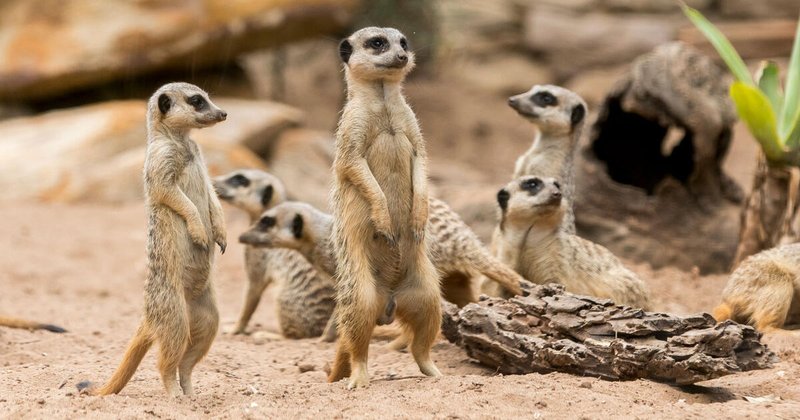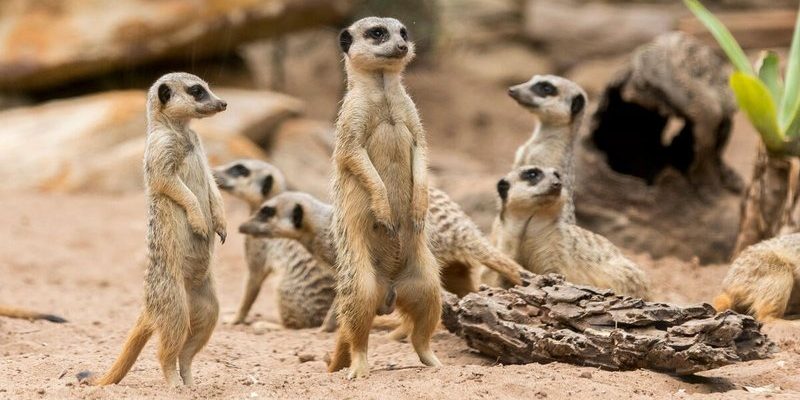
Meerkats, a species of mongoose native to Southern Africa, are the stars of their own show. Picture a family of meerkats huddled together, basking in the sun, all while keeping a vigilant lookout for predators. However, like many animals, they are at risk due to habitat loss, climate change, and human interference. Understanding the conservation status of meerkats is crucial—not just for their survival, but for maintaining the balance in their ecosystem.
What is the Conservation Status of Meerkats?
Currently, meerkats are classified as “Least Concern” by the International Union for Conservation of Nature (IUCN). This means they are not immediately facing extinction. However, that doesn’t mean we should stop paying attention. Their populations are stable in some areas, while in others, they face challenges that could impact their future.
To break it down further, meerkats are primarily found in the Kalahari Desert in Botswana, Namibia, and South Africa. In these regions, they thrive in dry, open landscapes where they can dig burrows and forage for food. But the population dynamics can vary widely based on environmental conditions, human activity, and local conservation efforts.
Why Are Meerkats Important to the Ecosystem?
You might think that meerkats are just cute little critters, but they play a crucial role in their ecosystem. By digging extensive underground burrows, they help aerate the soil, which benefits plant life. They also act as prey for larger predators, forming an integral part of the food chain.
Moreover, meerkats are social animals that live in groups called mobs. This social structure has developed unique behaviors that not only keep individual meerkats safe but also allows them to work together for foraging and raising young. Their communal lifestyle showcases the interconnectedness of species within their habitat, emphasizing why every creature matters.
Threats Facing Meerkats
While meerkats are currently not endangered, they do face several threats that could jeopardize their populations. Let’s look at some of the major challenges:
- Habitat Loss: Urban expansion, agriculture, and mining activities encroach on meerkat habitats, pushing them into smaller and less suitable areas.
- Climate Change: Changes in weather patterns can affect food sources and nesting sites, making survival more challenging.
- Predation: As their habitat shrinks, meerkats find themselves more vulnerable to predators like birds of prey and snakes.
It’s like trying to live in a shrinking apartment—eventually, there’s just not enough room to thrive. Although meerkats are adaptable, a rapid decline in resources can quickly change their fortunes.
Current Conservation Efforts for Meerkats
Conserving meerkats involves both protecting their habitats and ensuring their populations remain stable. Various organizations and local governments are working hard to address the challenges they face:
- Protected Areas: Establishing reserves and protected areas helps safeguard meerkat populations and their habitats from human activities.
- Research Programs: Ongoing studies focus on meerkat behavior, ecology, and population trends, providing data that guides conservation strategies.
- Community Involvement: Engaging local communities in conservation efforts helps build awareness and promotes sustainable practices that benefit both wildlife and people.
To illustrate, in Botswana, some reserves have successfully increased the number of meerkats by creating safe environments for them to thrive. These initiatives show promise, serving as a blueprint for future conservation efforts.
How Can You Help Meerkats?
Feeling inspired to make a difference? There are several ways you can contribute to meerkat conservation:
- Support Wildlife Organizations: Donating to or volunteering with organizations focused on wildlife conservation can help fund crucial projects.
- Spread Awareness: Educating your friends and family about meerkats and their needs can create a ripple effect of support.
- Adopt a Meerkat: Many wildlife organizations offer symbolic adoption programs that support conservation efforts directly.
Even small actions can add up. Remember, every bit of support counts, and the more people who care about meerkats, the brighter their future will be.
In conclusion, while meerkats are not currently endangered, their situation requires our attention and action. With the right conservation efforts and community support, we can help ensure that these charming creatures continue to thrive in their natural habitats. As you sip your coffee and think about meerkats, remember that we all play a part in protecting our planet’s wildlife. By staying informed and involved, we can create a brighter future for these fascinating animals and the ecosystems they inhabit. So let’s keep the conversation going and advocate for the meerkats, one cute little creature at a time!

